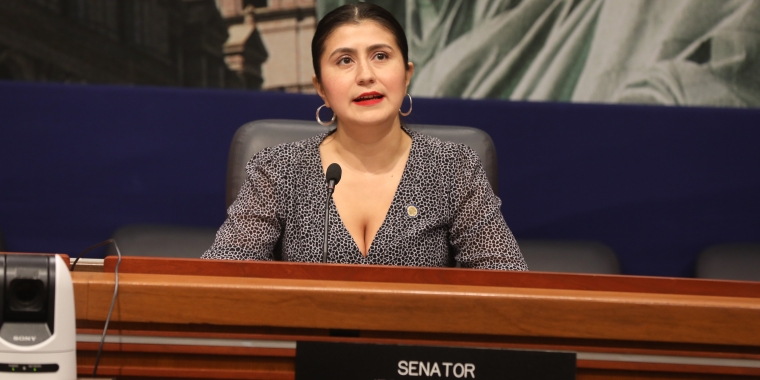New York Bill Would Force Amazon to Limit Grueling Warehouse Quotas
In the latest effort to challenge Amazon’s grueling labor practices, a new bill, that was introduced on Friday, would require New York employers to disclose and place limits on productivity quotas for warehouse workers.
The New York bill, known as the Warehouse Worker Protection Act, is an expanded version of a similar first-of-its-kind law that passed in California last year aimed at Amazon that regulates warehouse worker productivity quotas.
The legislation is in part a response to skyrocketing injury rates in Amazon warehouses linked to productivity expectations. Recent data shows that workers in the e-commerce warehousing industry in New York experience serious work-related injuries at three times the average rate for private industry in the state, according to OSHA data.
“The Warehouse Worker Protection Act will give workers in this industry—union or not—the ability to demand that their health and bodily integrity is accounted for, and not sacrificed for profits they do not get to share in,” said Jessica Ramos, the bill’s author and a New York state senator from Queens. “As the senate labor chair, I see it as my responsibility to clear the path for any worker who needs to stand up to an abusive employer.”
At Amazon, injury rates are, on average, higher than other warehouses. A recent analysis of 2021 OSHA data shows that the serious injury rate at Amazon increased last year and is more than double the rate of non-Amazon workers in the warehouse industry, despite Amazon’s pledge to be “the Earth’s safest place to work.”
The bill is introduced by Ramos, chair of the New York labor committee on Friday, as workers at Amazon’s LDJ5 warehouse in Staten Island voted on whether to unionize with Amazon Labor Union.
Amazon did not immediately respond to a request for comment.
The New York bill would require employers with at least 50 employees in a single warehouse or 500 workers statewide to share a written description of productivity quotas, how the quotas are developed, and how they can be used for disciplinary purposes with each worker. It would also ensure that production quotas do not interfere with workers’ basic rights such as bathroom breaks and rest periods or health and safety laws.
Amazon Labor Union, an independent union, which supports the bill, successfully unionized the first Amazon warehouse in US history in early April. The upcoming election at LDJ5 serves as a test of whether ALU’s success can be replicated at other warehouses.
“Even before I was an organizer, I saw a lot of workers talk about how they feel like they can’t miss a beat. They can’t tie their shoes or go to the bathroom or drink water because they have to hit their rate or else they’ll get terminated,” said Derrick Palmer, the vice president of Amazon Labor Union and a warehouse worker at JFK8. “With this law, workers will have an understanding of productivity metrics and the job won’t be as strenuous on their bodies.”
“These injuries are preventable. But right now there are no safeguards in place to prevent musculoskeletal injuries,” said Lynda Nguyen, a senior policy analyst at ALIGN, an alliance of labor organizations in New York, who worked on the bill. “That is pushing workers out of the workplace. Amazon is a good example. There’s 150 percent turnover.”
“I think that the New York Warehouse Workers Protection Act is incredibly important and will become a model for the entire country,” said Stuart Appelbaum, president of the Retail, Wholesale and Department Store Union, which ran the first union election at an Amazon warehouse in Bessemer, Alabama in 2021. “Amazon workers talk to us about the pace of work constantly and how they can not keep up with demands that they said were inhumane.”
Amazon has provided little transparency into how productivity “rates” that are designed by algorithms are formulated, but said that it creates productivity targets for workers that are based on their experience and take into consideration health and safety.
Across the country, Amazon warehouse workers have reportedly been terminated for “time off task,” or not keeping up with production targets during work time. The company has said that less than 1 percent of its workers are terminated for missing these targets.
The bill takes California’s law a few steps further by requiring employers to develop and implement an injury reduction program with worker input that identifies and addresses job hazards, such as rapid pace and heavy lifting, that can cause musculoskeletal injuries. This includes a worksite evaluation by an ergonomics consultant and worker training on how to avoid injuries.
Other national unions, including the Teamsters and Retail, Wholesale and Department Store Union RWDSU, with experience organizing Amazon warehouse workers, also contributed to the bill.
Correction: A previous version of this article said the New York bill would be enforced by the U.S. Department of Labor. It would be enforced by the New York State Department of Labor.



